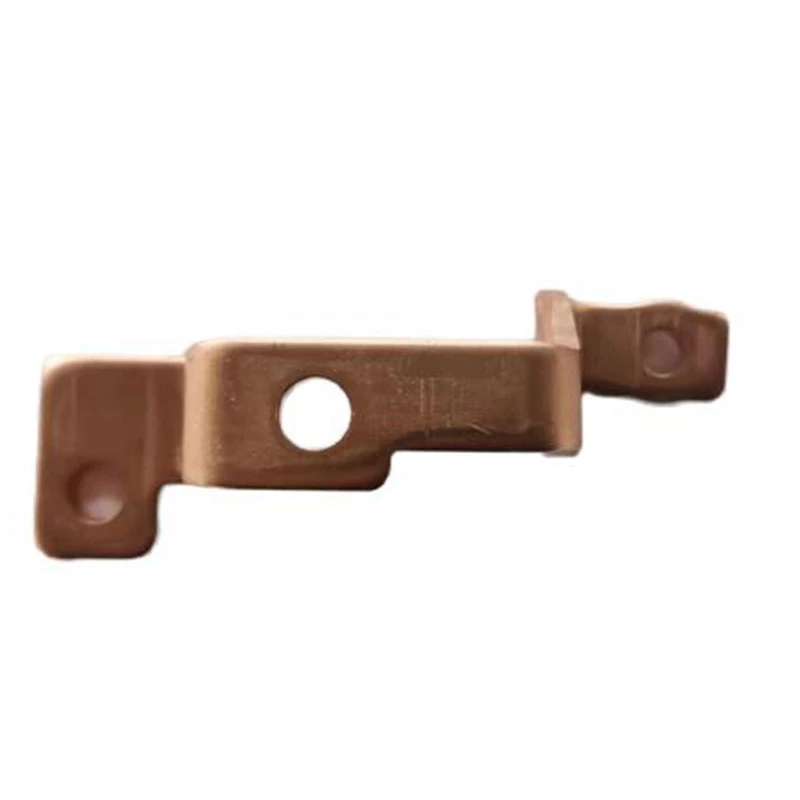die casting tool design
Die Casting Tool Design A Comprehensive Overview
Die casting is a manufacturing process that involves the injection of molten metal into a mold to produce intricate and high-precision parts. The success of die casting largely depends on the design of the die itself, which is a critical factor influencing the quality, cost, and efficiency of the production process. In this article, we will delve into the key aspects of die casting tool design, focusing on its importance, the design process, and best practices.
Importance of Die Casting Tool Design
The design of die casting tools directly impacts product quality, production speed, and operational costs. Well-designed tools facilitate effective metal flow, reduce waste, and ensure consistent dimensional accuracy. Moreover, they significantly influence the mechanical properties and finish of the final product. A poorly designed die can lead to defects such as incomplete filling, porosity, and dimensional inaccuracies, which ultimately result in increased scrap rates and higher production costs.
Key Elements of Die Casting Tool Design
When designing a die casting tool, several critical elements must be considered
1. Mold Design The mold must be designed to accommodate the specific geometry of the part being produced. This involves considerations such as draft angles, wall thickness, and ribbing to ensure effective metal flow and easy release of the finished part.
2. Cooling Systems Efficient cooling is essential to control the temperature of the die and the molten metal. Properly designed cooling channels help reduce cycle time and prevent thermal cracking. Moreover, the cooling system design must ensure uniform heat distribution throughout the die.
3. Ejection Mechanism The ejection system must be carefully designed to avoid damaging the cast part. It typically involves ejector pins that push the part out of the mold after solidification. The placement and number of pins are crucial to minimize stress concentrations and ensure smooth ejection.
4. Material Selection The choice of materials for the die is paramount. The die must be able to withstand the high temperatures and pressures associated with the casting process. Common materials include tool steel, which offers good hardness and wear resistance. However, the material selection may vary based on the production volume and the complexity of the part.
5. Parting Line The parting line is the joint where the two halves of the mold meet. Its design should minimize flash (excess material that escapes from the mold) while ensuring easy assembly and disassembly. A well-placed parting line can also enhance the aesthetic appeal of the finished product.
The Die Casting Tool Design Process
die casting tool design

The die casting tool design process involves several key stages
2. 3D Modeling Advanced CAD software is used to create detailed 3D models of the die. This allows designers to visualize the tool, make necessary adjustments, and simulate the die casting process.
3. Prototyping A prototype of the die may be created to test its functionality and effectiveness. This step is crucial for identifying potential problems before full-scale production.
4. Testing and Iteration The prototype undergoes rigorous testing, and the results are analyzed. Based on this feedback, modifications are made to optimize the design.
5. Final Production Once the design is finalized, the die is manufactured, and the production process begins.
Best Practices in Die Casting Tool Design
To maximize the efficiency and effectiveness of die casting tool design, several best practices can be employed
- Collaborate with Cross-Functional Teams Engage with engineers, designers, and production staff to gather diverse insights and perspectives. - Utilize Simulation Software Employ simulation tools to predict how the molten metal will flow within the die, identifying potential issues before physical production.
- Focus on Future Upgradability Design the die with future modifications in mind, allowing for easier adjustments as product specifications change.
- Maintain Strict Tolerances Aim for tight tolerances to ensure product quality and minimize rework.
In conclusion, die casting tool design is a vital aspect of the manufacturing process that requires careful consideration and expertise. By understanding the key elements involved and adhering to best practices, manufacturers can enhance product quality, reduce costs, and improve production efficiency. The design of the die not only influences the effectiveness of the casting process but also plays a crucial role in the overall success of the manufacturing operation.
-
Precision Casting Prototypes and Engineering Inc – Innovating Global Manufacturing SolutionsNewsNov.24,2025
-
Precision Casting Facility: Advanced Manufacturing for Global Industries | Hairun SourcingNewsNov.23,2025
-
Leading Precision Casting Corporation: Quality Metal Components for Global IndustryNewsNov.23,2025
-
Precision Cast Rods: Definition, Applications & Future Trends in ManufacturingNewsNov.22,2025
-
Precision Cast Iron Surface Plate: The Backbone of Industrial Accuracy and QualityNewsNov.21,2025
-
Precision Aluminum Investment Casting: High-Accuracy Manufacturing for Modern IndustriesNewsNov.20,2025















